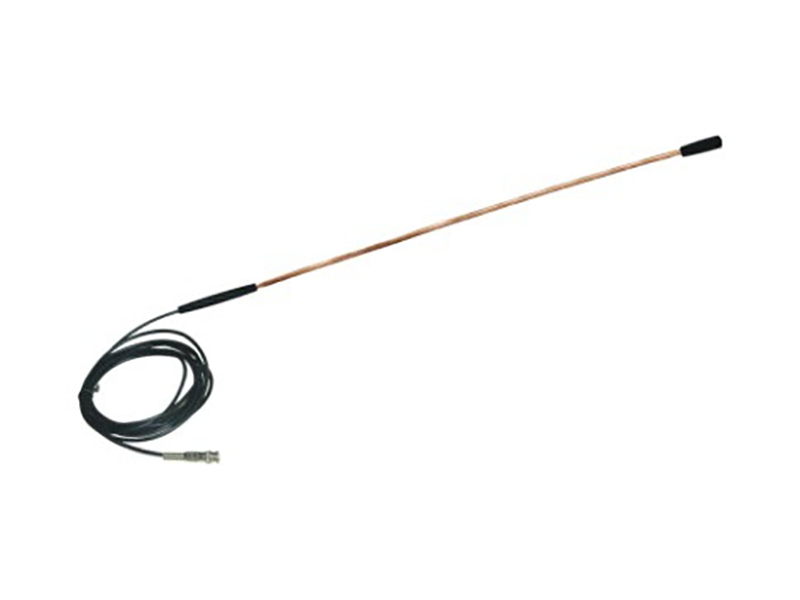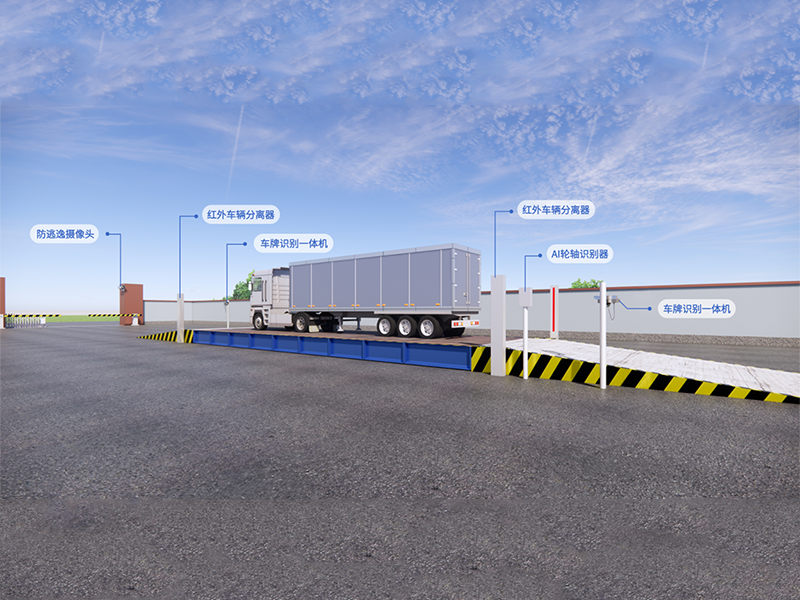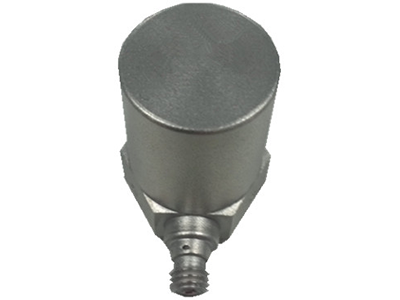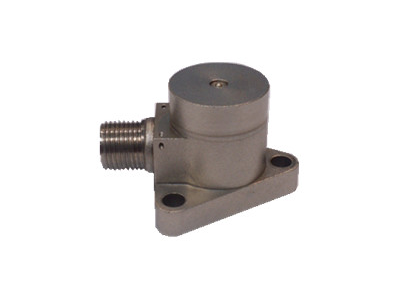Wholesale Accelerometer Sensor - Piezoelectric Traffic Sensor for AVC (Automatic Vehicle Classification) – Enviko
Short Description:
Product Detail
Product Tags
Related Video
Feedback (2)
Wholesale Accelerometer Sensor - Piezoelectric Traffic Sensor for AVC (Automatic Vehicle Classification) – Enviko Detail:
Introduction
The CET8311 intelligent traffic sensor is designed for permanent or temporary installation on the road or under the road to collect traffic data. The unique structure of the sensor allows it to be mounted directly under the road in a flexible form and thus conforms to the contour of the road. The flat structure of the sensor is resistant to road noise caused by bending of the road surface, adjacent lanes, and bending waves approaching the vehicle. The small incision on the pavement reduces damage to the road surface, increases installation speed, and reduces the amount of grout required for installation.
The advantage of CET8311 intelligent traffic sensor is that it can obtain accurate and specific data, such as accurate speed signal, trigger signal and classification information. It can feedback traffic information statistics for a long time, with good performance, high reliability and easy installation. High cost performance, mainly used in the detection of axle number, wheelbase, vehicle speed monitoring, vehicle classification, dynamic weighing and other traffic areas.
Overall dimension

Ex: L=1.78 meters; Sensor’s length is 1.82 meters; Overall length is 1.94 meters
|
Sensor Length |
Visible Brass Length |
Overall Length(including ends) |
|
6′(1.82m) |
70”(1.78m) |
76”(1.93m) |
|
8′(2.42m) |
94”(2.38m) |
100”(2.54m) |
|
9′(2.73m) |
106”(2.69m) |
112”(2.85m) |
|
10′(3.03m) |
118”(3.00m) |
124”(3.15m) |
|
11′(3.33m) |
130”(3.30m) |
136”(3.45m) |
Technical parameters
|
Model No. |
QSY8311 |
|
Section size |
~3×7mm2 |
|
Length |
can be customized |
|
Piezoelectric coefficient |
≥20pC/N Nominal value |
|
Insulation resistance |
>500MΩ |
|
Equivalent capacitance |
~6.5nF |
|
Working temperature |
-25℃~60℃ |
|
Interface |
Q9 |
| Mounting bracket | Attach the mounting bracket with the sensor (Nylon material not recycled). 1 pcs bracket each 15 cm |
Installation preparation
Choice of road section:
a)Requirement on weighing equipment: Long time stability and reliability
b)Requirement on roadbed: Rigidness
Method of installation
5.1 Cutting slot:


5.2 Clean and dry steps
1, In order to ensure that the potting material can be well combined with the road surface after filling, the installation slot should be washed with a high-pressure cleaner, and the surface of the groove should be washed with a steel brush, and the air compressor/ high pressure air gun or blower is used after cleaning to dry the water.
2, After the debris has been cleaned, the floating ash on the construction surface should be cleaned too. If there is accumulated water or obvious visible moisture, use an air compressor (high pressure air gun) or blower to dry it.
3, After the cleaning is completed, sealing tape (width greater than 50mm) is applied
to the road surface around the notch to prevent contamination to the grout.


5.3Pre-installation test
1, Test capacitance: Use a digital multi-meter to measure the total capacitance of the sensor with the cable attached. The measured value should be within the range specified by the corresponding length sensor and cable data sheet. The range of the tester is usually set to 20nF. The red probe is connected to the core of the cable, and the black probe is connected to the outer shield. Note that you should not hold both connection ends at the same time.
2, Test resistance: Measure the resistance at both ends of the sensor with a digital multi-meter. The meter should be set to 20MΩ. At this time, the reading on the watch should exceed 20MΩ, usually indicated by “1”.
5.4 Fix mounting bracket
5.5Mix grout
Note: Please read the instructions of the grout carefully before mixing.
1)Open the potting grout, according to the filling speed and the required dosage, it can be carried out in small quantities but a few times to avoid waste.
2)Prepare a proper amount of potting grout according to the specified ratio, and stir evenly with electric hammer stirrer (about 2 minutes).
3)After preparation, please use up within 30 minutes to avoid solidification in the bucket.
5.6First grout filling steps
1)Pour the grout evenly along the length of the groove.
2)When filling, the drainage port can be formed manually to facilitate the control of speed and direction during pouring. In order to save time and physical strength, it can be poured with smaller capacity containers, which is convenient for multiple people to work at the same time.
3)The first filling should be full filled slots, and make grout surface slightly higher than pavement.
4)Save time as much as possible, otherwise the grout will solidify (this product has a normal curing time of 1 to 2 hours).
5.7Second grout filling steps
After the first grouting is basically cured, observe the surface of the grout. If the surface is lower than the road surface or the surface is dented, remix the grout (see step 5.5) and do the second filling.
The second filling should ensure that the surface of the grout is slightly above the road surface.
5.8Surface grinding
After installation step 5.7 is completed for half hour, and the grout starts to solidify, tore off tapes on sides of the slots.
After installation step 5.7 is completed for 1 hour, and grout solidified completely, grind the
grout with an angle grinder to make it flush with the road surface.
5.9On-site cleaning and post-installation testing
1)Clean up grout residue and other debris.
2)Testing after installation:
(1)Test capacitance: use a digital multiple meter to measure the total capacitance of the sensor with the cable attached. The measured value should be within the range specified by the corresponding length sensor and cable data sheet. The range of the tester is usually set to 20nF. The red probe is connected to the core of the cable, and the black probe is connected to the outer shield. Be careful not to hold the two connection ends at the same time.
(2)Test resistance: use a digital multiple meter to measure the resistance of the sensor. The meter should be set to 20MΩ. At this time, the reading on the watch should exceed 20MΩ, usually indicated by “1”.
(3)Pre-load test: after the installation surface is cleaned, connect the sensor output to the oscilloscope. The typical setting of the oscilloscope is: Voltage 200mV/div, Time 50ms/div. For the positive signal, the trigger voltage is set to about 50mV. A typical waveform of a truck and a car is collected as a pre-load test waveform, and then the test waveform is stored and copied out for printing, and permanently saved. The output of the sensor depends on the mounting method, the length of the sensor, the length of the cable and the potting material used. If the preload test is normal, the installation is complete.
3) Traffic release: remarks: Traffic can only be released when the potting material is fully cured (about 2-3 hours after the last filling). If the traffic is released when the potting material is incompletely cured, it will damage the installation and cause the sensor to fail prematurely.
Preload test waveform

2 Axes

3 Axes

4 Axes

6 Axes
Product detail pictures:

Related Product Guide:
We persistently execute our spirit of ''Innovation bringing growth, Highly-quality making sure subsistence, Administration marketing reward, Credit history attracting clients for Wholesale Accelerometer Sensor - Piezoelectric Traffic Sensor for AVC (Automatic Vehicle Classification) – Enviko, The product will supply to all over the world, such as: Bangalore, Benin, Karachi, With all these supports, we can serve every customer with quality product and timely shipping with highly responsibility. Being a young growing company, we might not the best, but we're trying our best to be your good partner.
High production efficiency and good product quality, fast delivery and completed after-sale protection, a right choice, a best choice.






